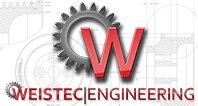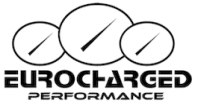Results 1 to 9 of 9
-
11-16-2017, 02:11 PM #1
It's time to admit direct fuel injection alone is a performance car liability with port fuel injection coming to the rescue
The new 2019 Corvette ZR1 LT5 motor illustrates the point well that direct fuel injection on its own is not the best choice for a performance car. You will notice an increasing trend of high performance cars coming to the market with dual fuel injection.

That means both direct and port fuel injection systems. Why both? Because direct injection quickly becomes a liability.
The technology spread due to efficiency benefits not because it was better for performance. Want to disagree? Tell it to McLaren who for some reason opted not to equip the McLaren 720S M840T V8 which is absolutely vaporizing all challengers with direct fuel injection.
The issue is not only do you need strong pumps capable of huge pressure the injection window shortens with RPM. That makes it a challenge to provide enough fuel at higher rpm ranges. This is exacerbated as power as added.
Let's assume for a moment you buy a Ferrari 458 which has a direct injected motor that revs to 9k rpm. You might be saying, what is the problem? Well, try running ethanol through the motor. As ethanol contains less energy than gasoline while at the same time offering higher octane and cooling benefits you need to flow more of it through your fuel system. The direct injection system quickly taps out. It only gets worse if you add power.
Port fuel injection does not have the same injection window or pressure issues. This is probably why McLaren does not use it on its 8000-8500 rpm motors. This is probably why Ford does not use it on the 8200 rpm GT350 Voodoo V8. This is probably why BMW M did not equip the S65 V8 or S85 V10 8250+ rpm screamers with direct injection.
Manufacturers building performance engines today with direct injection are increasingly offering dual injection systems with port fuel injection. Why? To alleviate stress on the direct injection system and offer fueling headroom say with modern ethanol blends. It also reduces carbon deposits.
There are pluses and minuses to both approaches. Direct injection allows motors to run at higher compression before detonation on pump fuels. This obviously provides a power and efficiency benefit. The cooling effect of direct injection is due to fuel droplets going through a phase change from liquid to gas and becoming an ignitable vapor that can be mixed with air and detonated by the spark plug.
Heat is absorbed during this change providing a cooling effect which will allow a direct injection motor to run leaner. Again, this provides an efficiency benefit when it comes to fuel use.
Port injection allows air flowing through the intake manifold to cool before reaching the combustion chamber while direct injection provides its cooling benefit in the chamber itself.
Port injection also does not require the high injection pressure and it does not have the limited injection window which means it is easier to flow far more fuel. You can see how combining these two technologies provides the benefits of both and minimizes the downsides.
Just look at the performance motors that recently entered the market with dual fuel systems:
Chevrolet LT5
Audi 2.5 TFSI
Audi/Lamborghini 5.2 V10
Bentley W12
Ford 3.5 Ecoboost
There are other motors with dual injection not listed there but you get the idea and more are on the way.
It is interesting to note that many enthusiasts on the various BoostAddict sites with direct injected motors who add power look into adding supplemental port injection systems.
It is ironic that getting away from port injection quickly leads them right back to port injection once they start to add power and run ethanol.
Factory dual-injection tends to provide the best of both worlds.
because of the combination of positive effects of both systems, it is used in sport- and racing-engines. Port injection gives the possibility to increase volumetric efficiency due to cooling down intake air. In addition, it shows advantageous in the mixture preparation process. For this purpose, port injection nozzle is placed in front of the intake funnel in the air box (in racing and sport cars / motorcycle engines). Direct injection has advantages in view of knocking behavior, volumetric efficiency and in supercharged engine concepts. A combination of both can increase maximum power output and torque behavior of the engine.
In standard automotive applications, the motivation of direct injection is mainly driven by reduction of fuel consumption. In this case, the advantages of a combination are restricted.
-
11-16-2017, 02:50 PM #2
 Timeout
Timeout

- Join Date
- Apr 2014
- Location
- ATL
- Posts
- 3,192
- Rep Points
- 2.1
- Mentioned
- 18 Post(s)
- Rep Power
- 0
One of the gurus on the CTS-V forum said that the new LT5's port fuel injection is controlled by a separate slave module over CAN (called E99) and he is looking into adding it to LT1/4's so you don't need chintzy aftermarket batch fire port injection controllers and it will real sequential fire and be all integrated into the ECU safeties and all.
This will potentially be awesome for C7 and V3 CTS-V owners.
-
11-16-2017, 02:52 PM #3
-
11-16-2017, 03:40 PM #4
 Member
Member















- Join Date
- Sep 2012
- Posts
- 2,192
- Rep Points
- 3,261.0
- Mentioned
- 30 Post(s)
- Rep Power
- 33
When I read that in the new ZR1 press release, I knew Sticky would be all over it.
-
11-16-2017, 03:41 PM #5
-
11-16-2017, 04:52 PM #6
 Member
Member


- Join Date
- Dec 2012
- Posts
- 36
- Rep Points
- 59.8
- Mentioned
- 0 Post(s)
- Rep Power
- 0
-
11-16-2017, 05:00 PM #7
-
11-17-2017, 07:44 PM #8
 Member
Member









- Join Date
- Mar 2012
- Posts
- 490
- Rep Points
- 601.5
- Mentioned
- 11 Post(s)
- Rep Power
- 7
-
12-03-2017, 09:04 PM #9
 Member
Member





- Join Date
- Jul 2013
- Location
- NJ | NYC
- Posts
- 512
- Rep Points
- 202.3
- Mentioned
- 5 Post(s)
- Rep Power
- 3






 Quote
Quote











f30n55, we...
f30n55 is now here!